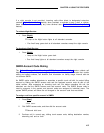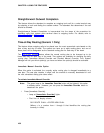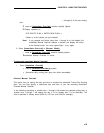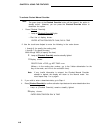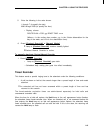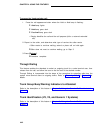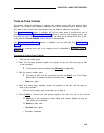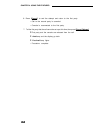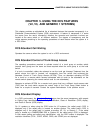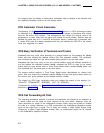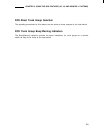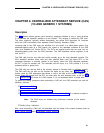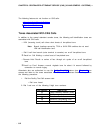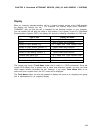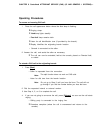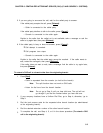
CHAPTER 5. USING THE DCS FEATURES
CHAPTER
(V2, V3,
5. USING THE DCS FEATURES
AND GENERIC 1 SYSTEMS)
This chapter provides an alphabetical list of attendant features that operate transparently in a
Distributed Communications System (DCS) environment. A feature is transparent if it works
the same (from the user’s standpoint) whether the consoles and terminals involved are
located at the same switch or on different switches. The degree of transparency and the
unique aspects pertaining to the operating procedures of each feature when the system is in
a DCS follow.
DCS Attendant Call Waiting
Operates the same as when the system is not in a DCS environment.
DCS Attendant Control of Trunk Group Access
The operating procedures required to activate control of a trunk group at another switch
(remote trunk group) are the same as those required when the trunk group is at the local
switch.
If a trunk is controlled, callers who attempt to use the trunk get Intercept Treatment from the
switch where the trunk is located, not necessarily from the switch that activated the
Attendant Control of Trunk Group Access (ACTGA). Thus, an attendant activating ACTGA
for a trunk on a remote switch causes intercepted calls to route to the attendants on the
remote switch (assuming the remote switch uses its own attendants).
Attempts to activate ACTGA for a remote trunk group that has a different trunk access code
(TAC) than the local switch causes the control lamp of the Trunk Group Select button to
flutter for a couple of seconds. Contact the system Administrator if this problem occurs.
DCS Attendant Display
In a DCS environment, the Attendant Display feature has the same transparency with respect
to Calling Party Identification, Called Party Identification, Class of Restriction (COR) display,
and Class of Service (COS) display.
On V1 systems or when using the COR button for V2 systems, the called party’s COR is
displayed only if the called party is located on another system. The called party’s COR is
displayed only if the called party is located at another V2, V3, or Generic 1. If the called
party is located at a DIMENSION® PBX or System 85, the called party’s COS is displayed.
In both cases (calling and called party identification), only the COR number is displayed. The
restriction identifiers (TOLL, CODE, NONE, ORIG, and OTWD) are not displayed.
5-1



